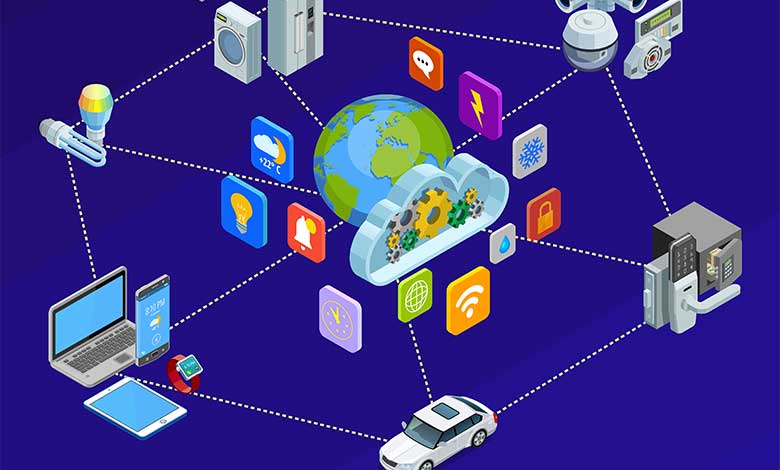
In 2020, we all know what the Internet of Things is and why it is needed. But how many of us are familiar with cloud platforms that represent one of the most significant layers in IoT?
It is no secret that the heterogeneity of the protocols significantly complicates the processes of connecting smart devices, their configuration and data processing. Similar problems are being addressed through the cloud of the Internet of Things. Today, using one of the Russian Internet of Things platforms (Rightect IoT Cloud Platform) as an example, we will show how easy it is to connect devices with different protocols, as well as use the information received to build automation processes.
This platform implements interaction with devices working using protocols such as MQTT, Wialon Combine, Wialon IPS, Galileosky, Modbus and some others.
In addition to using the presented protocols, for devices that do not have Internet access, it is possible to write software agents – some intermediaries between the equipment and the platform that are installed on another device (for example, Raspberry Pi) and connected to this equipment.
Suppose you want to ensure interaction with a device that works on one of the presented protocols. In this case, it will be enough to complete three steps:
- configure the model with the desired parameters and commands;
- create an object with a unique identifier in the platform;
- configure the device to connect to the platform.
Let’s analyze a few cases and see how it all connected.
Case №1 Agile-gong
According to the Agile concept, every day at 12 o’clock all employees of any company (let’s consider) gather at the Daily meeting. The usual notification in messenger may not be noticed during the work, so a new solution was invented – Agile-gong.
How is it implemented? Iron is NodeMCU (a miniature analog of Arduino with a built-in Wi-Fi module), a servo drive, and a capacitor. Every weekday at 12 o’clock, it is necessary to ensure that the output shaft of the servo drive with impact equipment at the end is turned at an angle sufficient for the gong to ring and notify everyone about the rise.
The connection diagram for iron is quite simple:

On the platform side, a device model was developed. It describes the parameters that can be received from the device, and the commands that can be sent to it. In the interpretation of the MQTT command, these are messages for the client with a certain topic and data, in our case, the data contains the necessary rotation angle.

Then an object was created with an identifier by which authorization on the platform occurs. After connecting, the display looks like this:
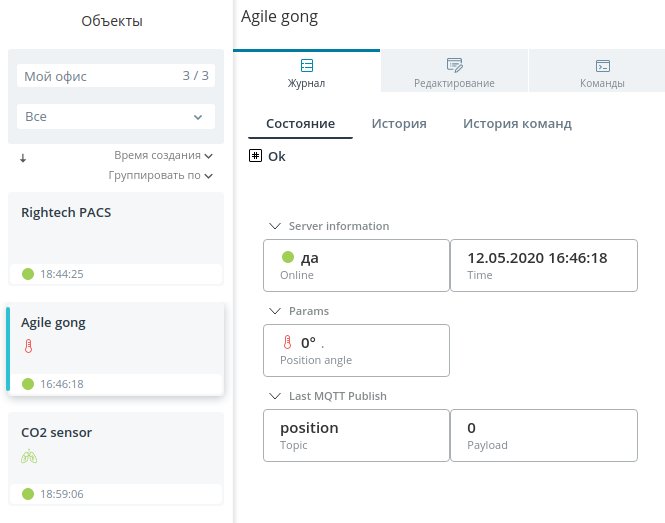
In commands, there is the option of sending a rotation command at an angle of 0 and 90 degrees.

Now you need to add automation scripts. We will create an automatic machine that, when the right time comes, will go into a 90-degree rotation state, then in the cycle for a configurable number of repetitions, it will make the necessary number of strokes and return to the initial waiting state of 12 hours.
Each automation scripts is a block scheme that sets out the logic of the behavior of an object. Having registered such a script, you can take into account all the changes that occur with the device, and based on exactly what changes have occurred, the device will be able to perform appropriate actions automatically, without sending a command to the user.
The resulting automaton can be used not only for a particular device. For example, you can make the exact same system with a gong and install it in another office in your office. Then you will have the same model, two different objects, and one automaton running on two objects.
Case №2 “Smart garden”
Let’s try to implement our own “smart garden” at home by using scripts below.
- Make a push notification in the platform that the soil moisture in one of the plants is below normal and it is time to organize massive watering. The need for watering is quite easy to determine by installing one soil moisture sensor in each pot.
- Make a similar notice that it is time to turn all the pots, since plants have the peculiarity of growing towards the sun.
- Arrange the on and off of the ultraviolet lamp in the dark according to the scheduler – turn on at 18:00, and turn off at 6:00.
The automaton for the first case is as follows: the transition to the state in which the notification is sent is made under complex condition – in one of the plants the humidity is below normal. The link between the conditions is OR.
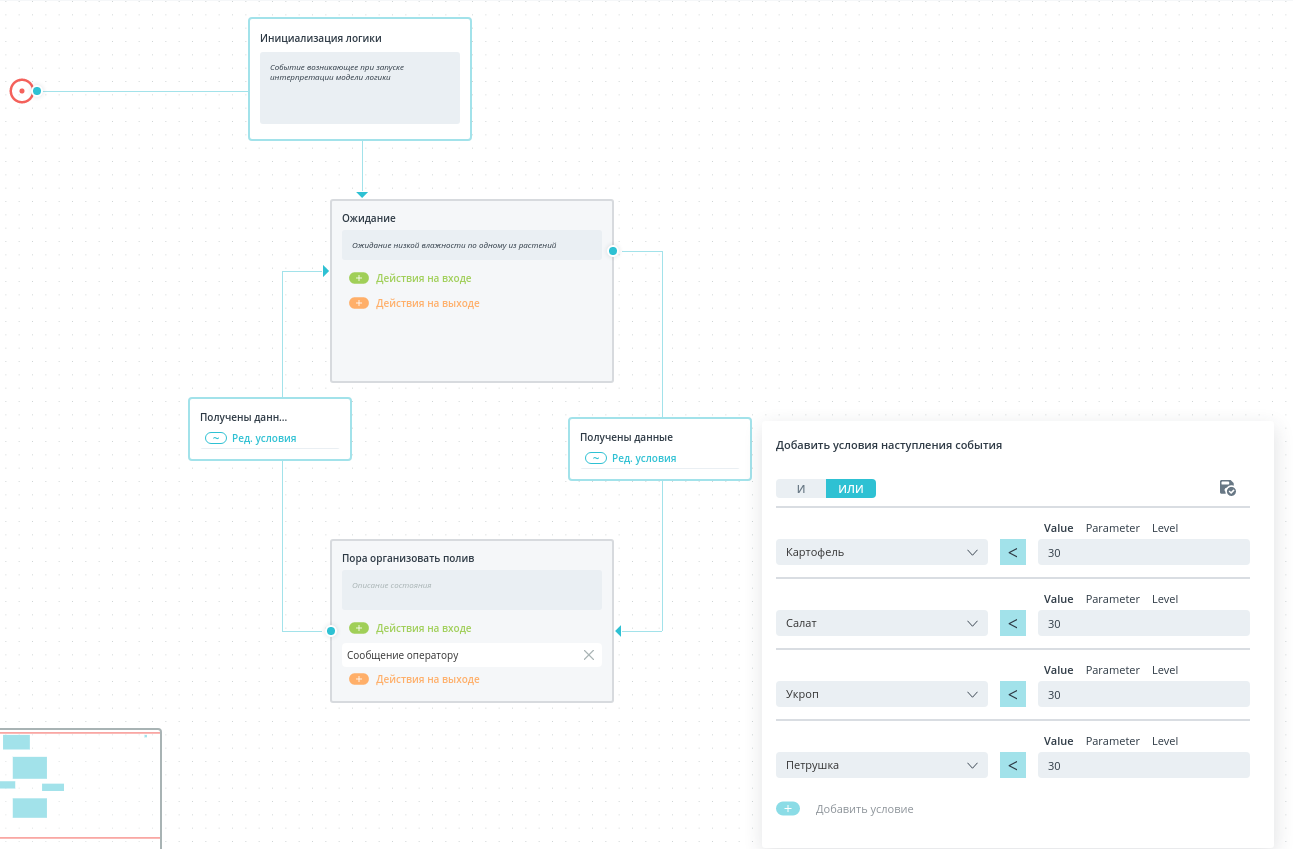
The return to the initial state occurs according to the condition – in all plants soil moisture is higher than normal, ligament AND.
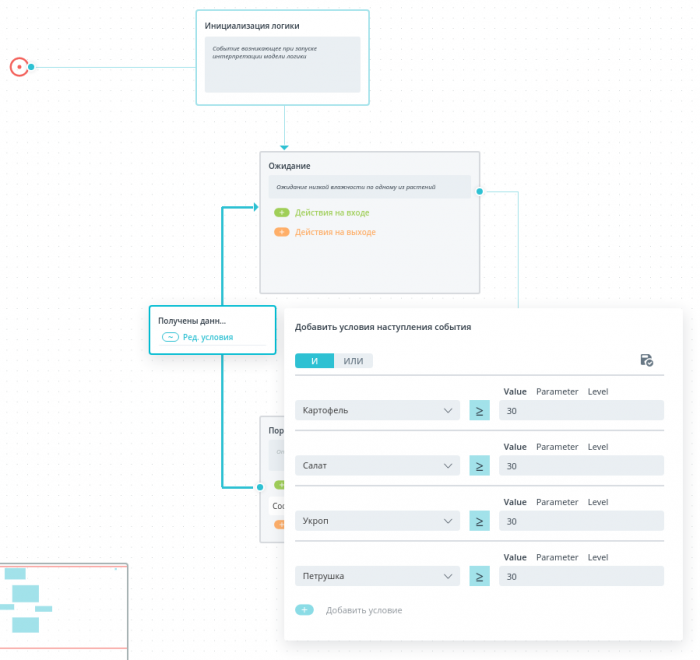
Automaton for the second case, turning the pots towards the Sun. The transition is carried out according to the scheduler, the reset is the unconditional transition.

And the last automaton for the third case, namely turning on and off the ultraviolet lamp at a certain time.

These automatons run on the same site and work in parallel.
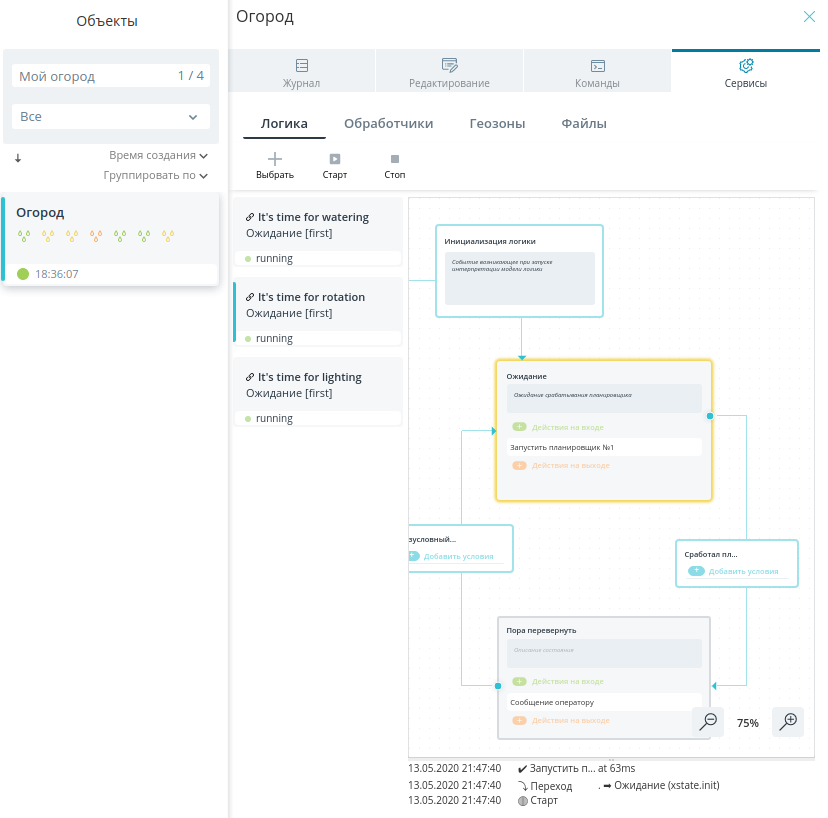
As we can see, by using Rightech IoT Cloud platform, you can not only turn the ordinary open space office of IT specialists into an advanced space with notification of daily Stand-up Agile meetings but also create your own smart garden at home.
You can find news and any updates of the Rightech IoT Cloud platform on their Telegram channel and also more information on their portal.











